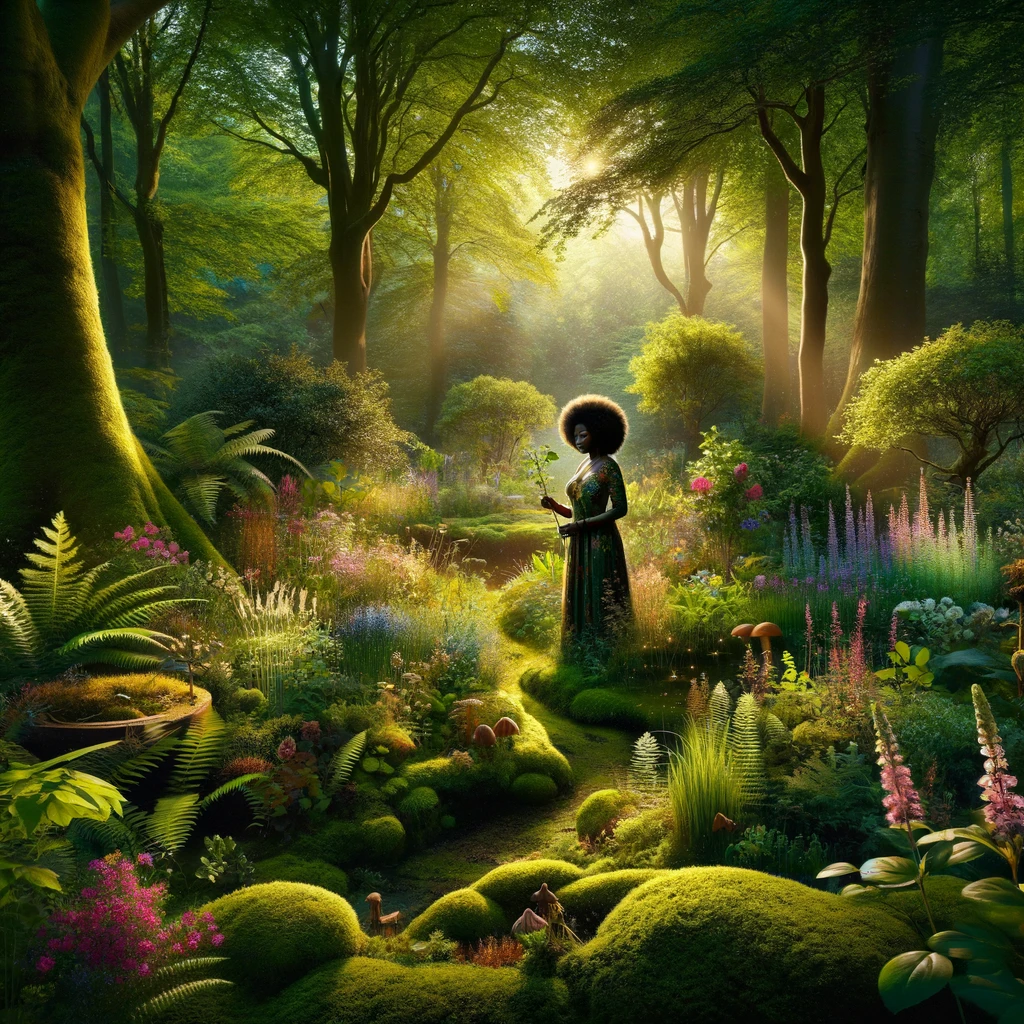Helen Keller believed a lush pine needle or spongy grass carpet was more welcoming than the most luxurious Persian rug. Her sensate world came alive.
The truth is that we all become more animated in a natural landscape. One way to bring nature closer is to plant a woodland garden.
Our deciduous forest biome inspires woodland gardens. In nature, individual tree canopies overlap and interlink, forming a more or less continuous canopy that shades the ground to varying degrees.
However, woodlands are not just trees.
The Ultimate Shade Garden
Depending on the amount of light reaching the ground through the tree canopy, there will be many other plants. These will include mosses, ferns, lichens, small flowering herbs, grasses, and shrubs.
The different types of plants offer a wide range of food choices for animal life. These might include invertebrates such as aphids and leaf miners. Butterfly caterpillars find nutrients in grasses and herbs on the woodland floor, while deer browse on tender shoots and young saplings.
A successful woodland garden is easy to care for since it requires minimal weeding and watering. Using native plants in a woodland garden design will further cut down on maintenance.
Light Requirements for Woodland Gardens
Before planting, take time to assess the light levels on your site.
Deciduous trees let light through to the forest floor. The more light available beneath the trees, the greater the number of other plant species that can grow within the woodland. Plants that grow under deciduous trees receive more direct and indirect sunlight than plants growing under evergreen trees. Other understory plants capture enough light even in locations with no direct sunlight.
Soil is another critical component to consider. Deciduous tree leaves provide nutrients and overwintering habitat for many beneficial creatures, such as butterflies, moths, frogs, salamanders, and ground-nesting birds.
Light Levels for Woodland Gardens
Light levels can increase depending on the time of year. Adding small—to medium-sized deciduous trees will provide dappled shade to ensure plants will tolerate fluctuating light levels.
You can mimic this in your shady landscape by adding organic matter: compost, leaf mold, or well-aged natural hardwood bark. It is best to allow the leaves to rest on the ground in the fall, nourishing the soil and its inhabitants.
Shade Garden Design
Woodland gardens are the perfect antidote to invasive plants.
If you are ready to start designing your garden, take inspiration from natural woodland. In nature, a woodland’s distinguishing feature is its verticality: successive layers of greenery ranging from tall trees to trim trees, to bushes, and finally, to ground-level foliage.
There are many suitable plants for woodland gardens. Woody and herbaceous species can create visual interest through delicate blossoms, seeds, or exciting bark patterns. Climbing plants can wind through trees and shrubs, and shade-tolerant herbaceous plants and bulbs can grow on the woodland floor.
A woodland garden may take several years, but the reward is worth it: your plot of welcoming pine needles and spongy earth.

